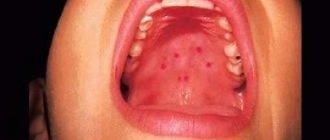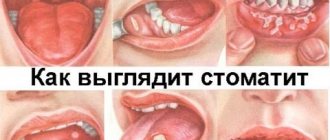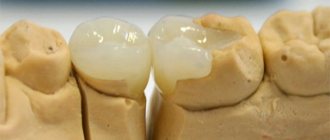Causes
Spasms are distinguished:
- Situational. A sharp muscle contraction is provoked by external causes.
- Endogenous. Caused by internal factors. For example, we are talking about the presence of a concomitant disease in a person.
Situational spasms in the throat are caused by the following reasons:
- Inhalation of air containing irritating substances.
- Use of medications with spasmogenic side effects.
- Stressful situations, excessive emotional and physical stress, even severe sharp pain.
- Sloppy eating.
- Interaction with any source of allergens.
The main groups of pathologies that can cause muscle spasms in the throat :
- Diseases of the endocrine system (damage to the thyroid and parathyroid glands).
- Psychoneurological disorders (hysteria).
- Upper respiratory tract infections (common causes are laryngitis, acute tonsillitis, pharyngitis).
- Vascular pathology (condition after a stroke).
- Diseases of the gastrointestinal tract (reverse reflux of hydrochloric acid with reflux esophagitis).
- Oncopathology (irritation of the nerve endings of the muscles by large tumors).
- Diseases of the musculoskeletal system (muscle spasm of the pharynx and esophagus due to hernia of the cervical spine).
Causes of spasms and choking in the throat
The occurrence of spasms in the throat and choking
Often, spasms in the throat are situational in nature, that is, their appearance is triggered by the influence of certain external factors on the human body. In some cases, spasms in the throat are the body’s response to any irritation or injury of various types. A common phenomenon is the appearance of convulsive contractions of the muscles of the pharynx or larynx in combination with the progression of coma or pathology in the human body.
Some factors can be identified whose impact on a person can lead to the development of a response in the form of a throat spasm:
- A fairly common occurrence is the development of a throat spasm as a result of too large pieces of food or fish bones getting into it.
- The use of certain medications that are used to lubricate or irrigate the pharynx.
- Inhalation of polluted air, which contains large quantities of various irritating substances.
- Constant exposure of the human body to various allergens.
- Strong emotional tension or nervous stress.
- Severe fatigue, resulting in increased physical stress.
Throat spasms are accompanied by difficulties in breathing and swallowing, but in some cases they can be neurogenic in nature.
The spasmodic state of the laryngeal muscles occurs as a result of severe irritation of certain groups of nerves localized in the larynx area.
It is worth paying attention to those patients who complain of periodic occurrence of attacks of throat spasm, since this may signal the development of acute myocardial infarction in the body.
Symptoms of the disease
Throat spasms are accompanied by the following symptoms:
- The appearance of difficulty in breathing, which causes a slight noise.
- The neck muscles become tense and this causes pain.
- The patient experiences problems with the process of swallowing food.
- There is a feeling of a lump in the throat.
- The skin becomes pale, and in the case of a prolonged spasmodic state, it turns blue.
- The patient develops cold sweat.
If a mild spasm occurs, it goes away on its own in just a few minutes, and normal breathing and swallowing function are restored.
In case of severe spasmodic condition of the larynx, if timely medical care is not provided, additional symptoms may occur:
- General cramps
- Mouth foam
- Sudden loss of consciousness
All this leads to disruption of the cardiovascular system and the result of this pathological condition of the throat can even be fatal.
Of course, the easiest way to identify the spasm of the pharynx that develops as a result of the penetration of external irritants into the body in the form of food, liquid, air or medicine.
However, if throat spasms occur as a result of the progression of any pathology in the human body, then an analysis of the symptoms that arise will allow us to identify the specific cause of this condition:
- Sore throat, laryngitis and pharyngitis are accompanied by painful sensations when swallowing food and a hoarse voice, but the most pronounced symptom is the appearance of pain and sore throat.
- If a spasm of the throat is a response to exposure to any allergen, then the following signs of pathology can be observed: the appearance of a sore throat, a strong and prolonged cough, a runny nose (which is accompanied by the appearance of clear mucus from the nose), prolonged sneezing, severe pain in the eyes and lacrimation.
- In diseases that cause disruption of the gastrodigestive tract, additional symptoms appear, such as heartburn and a feeling of a lump in the throat.
- Spasms in the throat can occur when the thyroid gland is enlarged, and most often this is observed in moderate to severe pathology.
- The appearance of frequently recurring throat spasms, which are combined with difficulties in swallowing food, and also do not cause rapid weight loss, can signal a dangerous disease such as a tumor of the esophagus.
Main and accompanying symptoms
Spasms in the throat can manifest themselves in the form of the following main symptoms:
- Breathing problems. The degree can range from mild difficulty in breathing (inspiratory dyspnea) to a feeling of suffocation. Inhalation of air is accompanied by noise, sometimes a slight whistle and a barking cough (in a child).
- Feeling of a lump or foreign body in the throat. The patient is unable to quickly get rid of it; drinking water does not always help. Throat spasms may become worse when swallowing.
- Pain syndrome. Caused by pathological tension of the cervical muscles. Light pressure on the throat may increase spasm and pain.
Possible additional symptoms:
- Change in skin color (pallor, cyanosis due to lack of air).
- Cold sweat.
- Anxiety, feeling of fear.
- Headache.
- Loss of consciousness.
- Foaming at the mouth.
- Spasm.
All of these signs can occur together or separately. The intensity of manifestations and the combination of symptoms directly depend on the cause of the spasm. Sometimes complaints can be so severe that the patient needs emergency help.
Signs of pathology development
In adults, symptoms of the disease include:
The appearance of cool sweat. The skin suddenly turns pale and becomes covered in perspiration.
Inhalation becomes difficult, accompanied by whistling and noise. The patient feels an atypical contraction of the neck muscles.
The patient feels a contraction of the smooth muscles of the neck.
This pathological condition develops at one moment and ends with an attack of acute suffocation, which leads to respiratory arrest. In most cases, throat spasms go away without the help of others, as evidenced by prolonged exhalation.
Attention: In severe cases, laryngospasm leads to loss of consciousness, sudden cessation of breathing and convulsions. Failure to provide timely medical assistance can lead to death for the patient.
Features of the manifestation of throat spasm in children
In young patients, sudden contraction of the throat muscles develops for the following reasons:
Progression of acquired infectious diseases.
Allergic reactions. Long-term use of medications. Lack of vitamin D and calcium.
Unlike adult patients, a baby may develop a spasm of the digestive tract and throat due to:
A crying fit. Sudden fear. Powerful laughter and coughing.
Examination of a baby by an otolaryngologist
The clinical picture of the disease in children consists of the following symptoms:
Heavy and echoing breath. Attack of loud cough.
Pallor of the skin. The child is in a state of shock.
Symptoms of laryngeal spasms in people with psychological disorders
In such cases, throat spasms develop against the background of neurosis.
The clinical picture of the disease is formed during stressful situations and prolonged psycho-emotional stress.
The following symptoms may precede atypical contraction of the smooth muscles of the respiratory tract in neurological patients:
Feeling of a “lump in the throat” and pain in the nasopharynx. Development of signs of acute respiratory failure. Gradual progression of symptoms of suffocation. Increased heart rate. Attacks of pain in the abdomen or heart. Intense trembling of the upper and lower extremities.
It is not recommended to eliminate such serious disorders of the respiratory system with your own hands. The patient should be immediately hospitalized and thoroughly examined.
Cramps due to eating
Eating certain foods causes a sharp contraction of the muscles of the pharynx and esophagus. The cause of spasms in the throat can be a large lump of hard, dry food. Accidental ingestion of sharp bones also leads to esophageal obstruction.
Errors in nutrition play an indirect role in reflux disease: eating spicy, fatty foods is a factor in increasing the acidity of gastric juice. In a patient suffering from this disease, hydrochloric acid is partially released into the esophagus. The contents of the stomach irritate the walls of the organ and cause them to contract sharply, which feels similar to the feeling of a lump when swallowing. A gastroenterologist decides how to relieve unpleasant spasms in the throat with reflux esophagitis.
Endocrine pathologies
The feeling of squeezing of the throat and lack of air is sometimes caused by pathology of the thyroid gland. This is due to the pathological growth of organ tissue - goiter. The throat is subject to compression in moderate to severe cases of the disease. Then the pain may join.
Severe muscle spasms in the throat are also caused by damage to the parathyroid gland. A decrease in the level of parathyroid hormone leads to a pronounced lack of calcium and an excess of phosphates in the blood. Such an imbalance in the body is the cause of painful cramps. The pain affects almost all muscle groups, including the esophagus.
Ways to eliminate laryngeal spasms
To alleviate the patient’s condition, doctors advise the following measures:
I place the patient in a horizontal position and provide him with an influx of fresh air. I apply a swab moistened with ammonia to the nasal passages. Provide the person with the opportunity to drink a glass of cool water.
If such healing measures do not bring relief, then the patient should hold his breath for a short time without the help of others or ask him to give him several claps on the back and neck.
Another method of therapy is artificially inducing vomiting and taking a hot bath for prolonged spasms.
Providing emergency assistance in case of acute suffocation of a patient.
A spasm of the laryngeal cleft, which was formed due to the traumatic penetration of a foreign body into the respiratory system, requires surgery.
For your information! Frequent pathological attacks of spasms serve as a reason for conducting detailed diagnostics to establish the real cause of pathological attacks.
The price of treatment for the disease depends on the primary diagnosis of the disease that provokes the spasm.
Methods for healing allergic spasms of the larynx
Allergic muscle contraction is accompanied by increasing swelling of the mucous membrane of the respiratory system, which significantly worsens the patient’s well-being.
Treatment in such cases is carried out in the following order:
Restoration of airway patency.
In emergency cases, this is done surgically.
Drug expansion of the lumen of the throat and bronchi. Injection or internal administration of antihistamines, which provide direct treatment for allergies.
Sharp swelling and narrowing of the throat of allergic origin.
Instructions for providing medical assistance to clients with allergic suffocation:
| Symptom | Treatment procedure | Pharmaceuticals |
| Muscle spasm | Surgery | |
| Drug effects | "Ephedrine", "Teofedrine", "Antasman" | |
| Swelling of the mucous membrane | Antihistamine therapy | "Diphenhydramine", "Suprastin", "Tavegil" |
Psychoneurology
A number of mental illnesses appear in the form of a feeling of suffocation, a lump in the throat. Patients' complaints, as a rule, are emotionally charged: they may indicate pain, a feeling of fear of death, the inability to swallow food and breathe. The slightest irritant can cause a nervous breakdown. The results of an objective examination indicate the absence of pronounced pathological changes in the body. Nervous spasm in a healthy throat occurs with neuroses and depression.
Etiology of laryngeal spasm
The causes of the pathology may be:
The action of external irritants in the form of penetration of food particles into the lumen of the respiratory tract. Disorders of the nervous system. Acquired stress, neuroses and overstrain of the vocal cords when singing are predisposing factors to throat spasms.
In some cases, infectious lesions of the upper respiratory tract can stimulate an atypical spasm of the throat muscles. Oncological prerequisites in adults in the form of the growth of a malignant neoplasm (see Throat cancer: symptoms of the disease). Allergic reaction of the body. This may be a consequence of taking a drug or the action of external allergens.
Laryngospasm
It is a sharp involuntary contraction of the muscles of the larynx. The degree of spasm ranges from a slight feeling of lack of air to suffocation. A severe form of the symptom is accompanied by complete closure of the glottis and is a life-threatening condition. Due to anatomical features, such throat spasms more often occur in a child under 3 years of age than in an adult.
Causes:
- Rapid progression of an ENT disease, such as laryngitis.
- Contact with allergens or inhalation of irritants.
- Severe deficiency of calcium and vitamin D (children suffering from rickets are at risk).
Manifestations:
- difficulty breathing, accompanied by noise and whistling;
- tendency to quickly transition to a state of suffocation;
- hoarseness of voice.
The classic clinical picture of laryngospasm in children is brighter than in adults: spasms in the throat also cause a barking, whistling cough.
Laryngospasm in children
Spasms in the throat of a child
The most common form of spasm is considered laryngospasm - this is an involuntary contraction of the muscles of the larynx, which can occur quite suddenly and be accompanied by inspiratory shortness of breath.
Laryngospasm in the human body can be of varying degrees, but in its severe form, suffocation develops as a result of complete closure of the glottis and this can lead to death.
Laryngospasm is often diagnosed in children and the causes of this pathological condition may be:
- Progression of infectious diseases in the baby’s body.
- Exposure of the body to various allergens or irritants in the air.
- Taking certain medications for a long time.
- Insufficient levels of calcium and vitamin D in the child’s body
Unlike adults, in children laryngospasm is accompanied by vivid symptoms, and the attack itself can develop during:
- Crying hard
- Sharp fright
- Laughter
- Severe cough
The following signs of throat spasm in children can be identified:
- Noisy and whistling breath
- Loud and barking cough
- Pale skin
- Child's fright and sharp crying
In the case of a mild spasmodic condition of the pharynx, this attack goes away on its own in a few minutes, however, severe spasms often occur that can threaten the baby’s life. It is for this reason that a sudden and unexpected occurrence of pharyngeal spasms in a baby should be a reason to urgently seek medical help.
Diagnostics
Finding the pathology that provoked the syndrome is difficult. This is explained by the polyetiology (multiple causes) of throat spasm. What to do if this complaint occurs will be determined correctly by your attending physician. The first doctor you should contact with a problem is a therapist. Given the location of the complaint, the patient should be examined by an otolaryngologist. If necessary, consultations with an oncologist, gastroenterologist, and other specialists are held.
If there are no signs of persistent physical pathology, the diagnostic search begins with the exclusion of external causes that can provoke a throat spasm and its accompanying symptoms. For example, the doctor may ask whether the patient is allergic to any substances or whether stress preceded the throat spasm.
Basic research methods:
- Pharyngoscopy. The search for the cause begins with a direct examination of the pharynx using a spatula.
- Laboratory blood tests . Helps identify common signs of inflammation. If a tumor is suspected, tumor markers are checked. In some cases, hormonal levels are examined.
- Laryngoscopy. An instrumental diagnostic method that allows you to assess the general condition of the mucous membrane of the larynx and glottis.
- FGDS (fibroesophagogastroduodenoscopy). A method aimed at finding the cause of pathology along the digestive tube.
- Ultrasonography. Used to exclude thyroid diseases.
The list of studies is supplemented during the diagnostic search to determine the reason why the patient suffers from muscle spasms in the throat.
Diagnosis of pathology
Method for detecting the disease
If spasms of the pharynx or larynx occur quite often and the reasons for their occurrence have nothing to do with the effects of mechanical and chemical irritants, then you should consult a specialist. The doctor conducted the necessary diagnostic examination, identified the causes of this pathological condition of the patient’s body and gave recommendations on methods of treating this pathology.
A convulsive state of the throat is a symptom that can accompany the development of various diseases in the human body, and it is this factor that does not allow one to independently establish the correct diagnosis.
Among these diseases there may be those that are particularly dangerous to human health and require immediate treatment.
First of all, the patient needs to seek help from a therapist or otolaryngologist, who, after a visual examination and a series of studies, will, if necessary, refer the patient to other specialists.
The main methods for diagnosing pathologies accompanied by the development of throat spasms are:
- Pharyngoscopy is a research method that involves conducting a visual examination of the patient’s pharynx using a spatula.
- Taking a smear from the throat cavity.
- Conducting general and biochemical blood tests.
- Endoscopy.
- Fibroesophagogastroduodenoscopy.
- Ultrasonography.
- Tests to determine hormonal levels.
One or another research method is selected depending on the pathology that progresses in the human body and has led to the development of a spasmodic condition of the larynx or pharynx.
Treatment
If a throat spasm suddenly occurs, what should you do? First of all, you should not give in to panic.
Measures:
- Provide fresh air by opening a window.
- Give some water at room temperature. Hot or too cold liquid can make the condition worse.
- Loosen tight clothing, remove your tie, unbutton your shirt collar.
- If a spasm of smooth muscles in the throat is caused by inhalation of irritating substances, immediately stop their intake or take the patient to a safe place.
- Conveniently position the patient.
In some cases, artificially inducing vomiting helps. For example, this is effective when swallowing a piece of food that is too large to move normally further down the esophagus. If there is a bone stuck in your throat, you may need a surgeon to remove it.
Basic treatment depends on the factor that caused the throat spasm. Therefore, there are many ways to combat the symptom.
Examples:
- An allergic attack can be stopped with the help of antihistamines, for example, Suprastin.
- If the causes of asthma attacks lie in asthma, bronchodilators are prescribed. Berodual has a quick effect in the form of inhalation.
- For endocrine pathology, hormonal drugs are prescribed. Resection of the overgrown thyroid gland is possible.
- Psychosomatic disorders can be corrected with antidepressants and tranquilizers. There are many drugs in these groups, they all differ in their mechanism of action . The psychiatrist himself decides how to relieve a spasm in the throat due to neurosis or depression.
- Tumors compressing the organs of the neck have to be removed surgically. For malignant neoplasms, treatment is supplemented with radiation and chemotherapy.
- Drugs for infectious pathologies are selected according to the pathogen. These can be antibiotics, antiviral agents.
- Esophageal spasm during reflux esophagitis is helped by drugs that reduce the acidity of gastric juice. Proton pump inhibitors are used (Omeprazole, Pariet).
What to do if you have a throat spasm
For complete treatment, an examination prescribed by a specialist is necessary. However, laryngospasm can occur unexpectedly, so everyone needs to know how to relieve a spasm in the throat.
Simple measures
- Provide the patient with air flow and complete rest,
- Let me smell ammonia,
- Give a glass of water to drink, preferably warm.
In most cases, this is enough and the attack stops. If this is an adult and he adequately perceives the situation, then he will be able to help himself. Some people, especially children, are very frightened by these attacks and need support. If the above measures were not enough, you can try holding your breath and taking a warm bath. These measures will help the spasmed muscles relax and the spasm will pass. In more serious cases, when laryngeal stenosis and suffocation are observed, you should contact a medical facility or call an ambulance.
Prevention
To avoid symptoms such as throat spasms, pain and choking, it is recommended:
- Compliance with the work and rest regime.
- Avoiding stressful situations.
- Proper nutrition, eating sufficiently crushed foods, chewing thoroughly.
- No contact with already known allergens.
- Timely treatment of concomitant diseases.
If the patient has studied many information sources and theoretically knows how to get rid of a spasm in the throat, this does not eliminate the need for qualified medical care. At best, illiterate self-medication will lead to a loss of time, at worst, it will cause death. Only a doctor will correctly determine how to treat a patient’s throat spasm. Treatment depends on the cause of the condition, of which there are many.
Author: Kristina Mishchenko, doctor, especially for Moylor.ru
Treatment of pathology
Ways to treat throat spasms
If you experience an unpleasant feeling of spasm in the throat, you can apply tips that can quickly and effectively get rid of such a pathological condition.
To help get rid of a spasmodic throat condition:
- Ensuring complete rest for the patient and sufficient supply of fresh air to the room.
- The use of ammonia.
- Offer to drink a glass of water.
If these methods do not lead to the desired result, then you need to hold your breath slightly or ask someone to lightly slap you on the back. Another method of relieving a spasm in the throat is to artificially induce an attack of vomiting, and also be sure to take a warm bath during a prolonged attack.
If the cause of the development of a spasmodic condition in the throat is a stuck bone, then most likely, surgical intervention will be required in this case.
If convulsive attacks occur frequently in the pharynx and larynx, you should seek help from a specialist, because often this condition can be caused by some dangerous disease.
In the event that the development of throat spasm occurs due to neurosis, then the main methods of treatment in this case are:
- Psychotherapy.
- Drug treatment using: antidepressants and tranquilizers.
More information about respiratory spasms can be found in the video.
In the event that a spasm of the throat and an attack of suffocation have developed as a result of allergic edema, then most often doctors prescribe treatment using medications such as:
- Diphenhydramine
- Suprastin
- Tavegil
A spasmodic condition of the throat, which is accompanied by an attack of suffocation, may be a sign of bronchial asthma, so treatment in this case is carried out with the use of medications to normalize the bronchi.
Most often used for these purposes:
- Ephedrine
- Teofedrine
- Antasman
Prevention of pathology
In order to prevent the development of a severe spasmodic condition of the throat, it is recommended to follow some preventive measures:
- In your daily routine, you need to make room for relaxation procedures.
- The alternation of work and rest should be properly organized.
- You need to sleep at least 8 hours a day.
- The main guarantee of health is proper and nutritious nutrition.
- Don't forget about a healthy lifestyle and walks in the fresh air.
Spasms of the throat and larynx are an unpleasant and dangerous pathological condition of the human body, which in some cases can result in the death of the patient. It is for this reason that it is important to seek help from specialists when the first signs of pathology appear, which will help prevent the development of severe complications.
Noticed a mistake? Select it and press Ctrl+Enter to let us know.
Share with your friends! Be healthy!
A spasm in the throat is a complaint that can cause panic in the patient. Symptoms range from discomfort when swallowing to choking. Its pathological substrate is a sharp narrowing of the lumen of hollow organs located in the neck (pharynx, larynx, esophagus). Some cases end in death, so this condition cannot be ignored or self-medicated.
A spasm in the throat is a symptom, under the mask of which several pathologies are hidden. Therefore, there is no universal method for eliminating it. The cause of this complaint directly determines how the doctor will treat a throat spasm in a particular patient. Consultation with more than one specialized specialist may be required.










